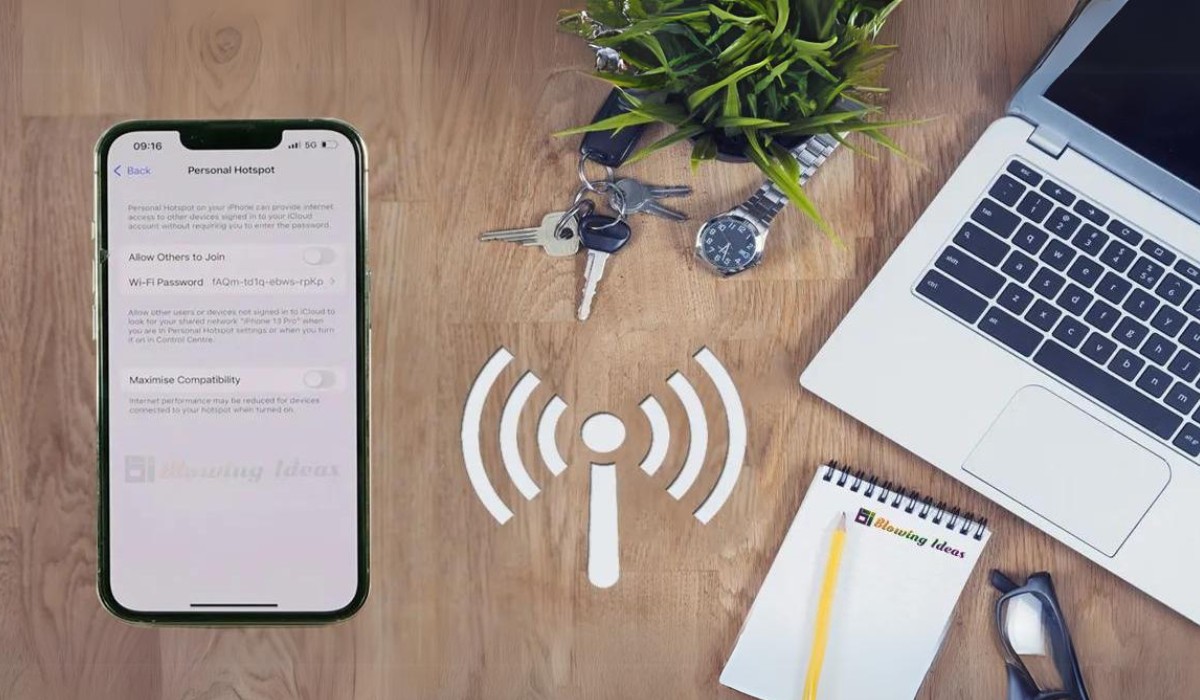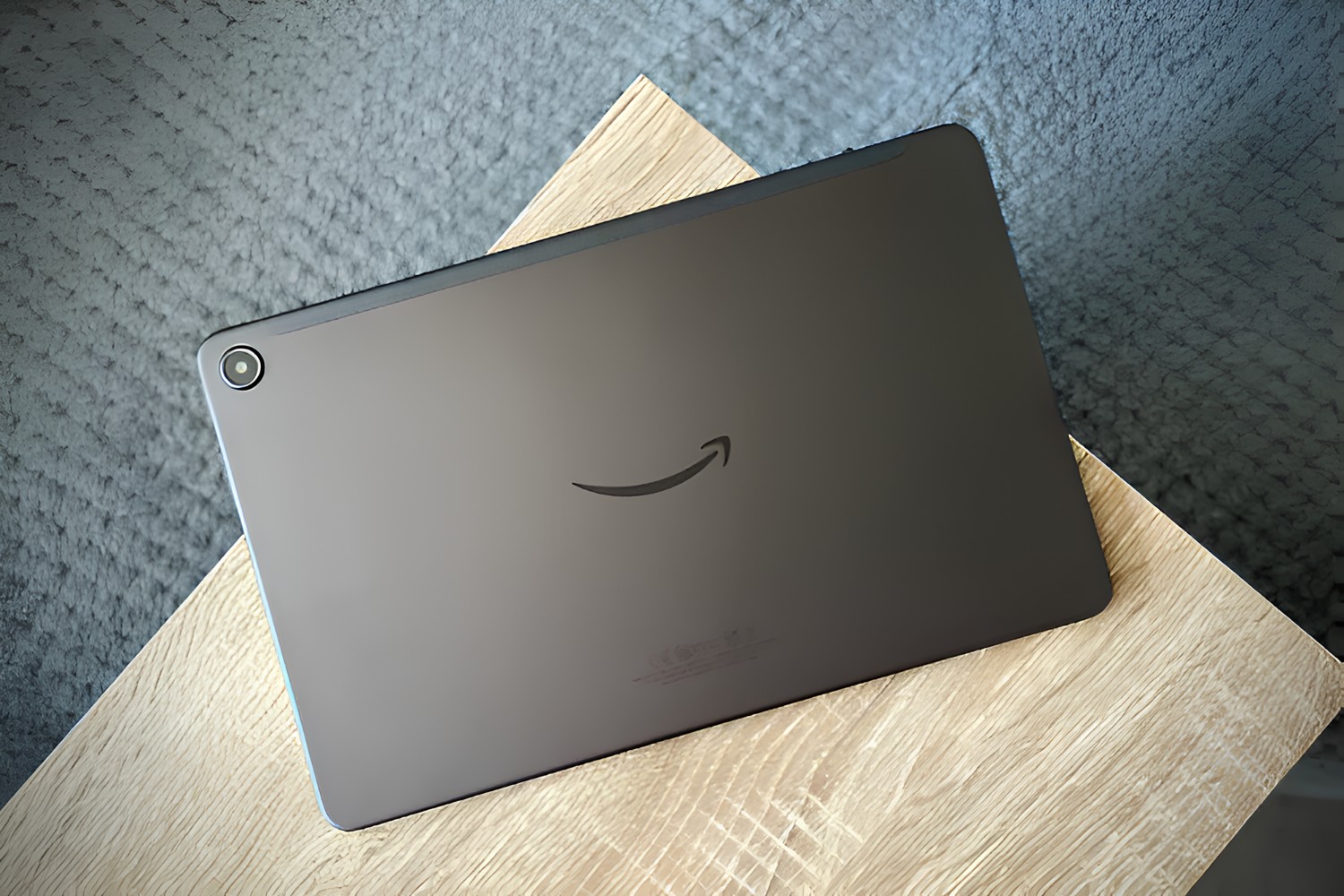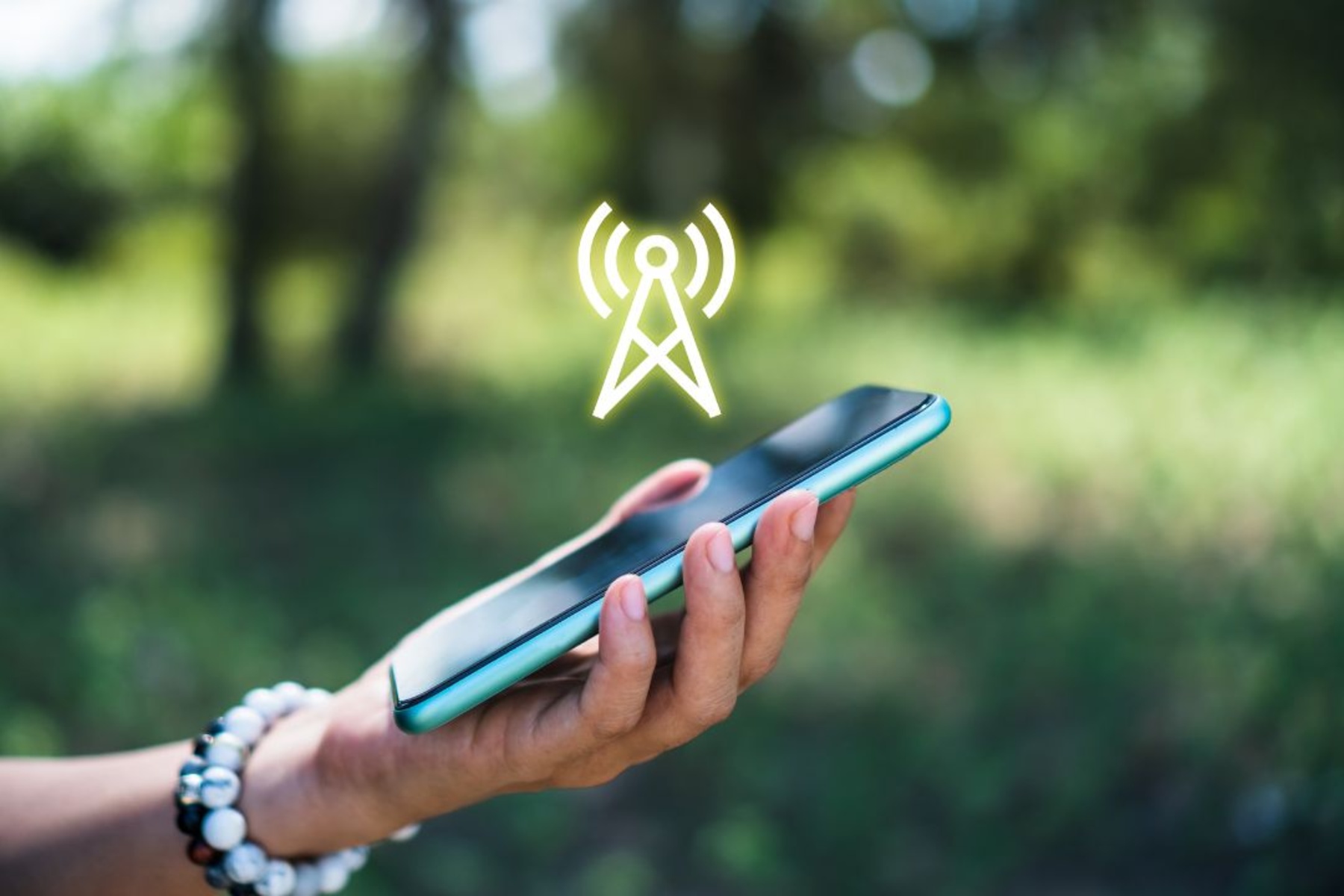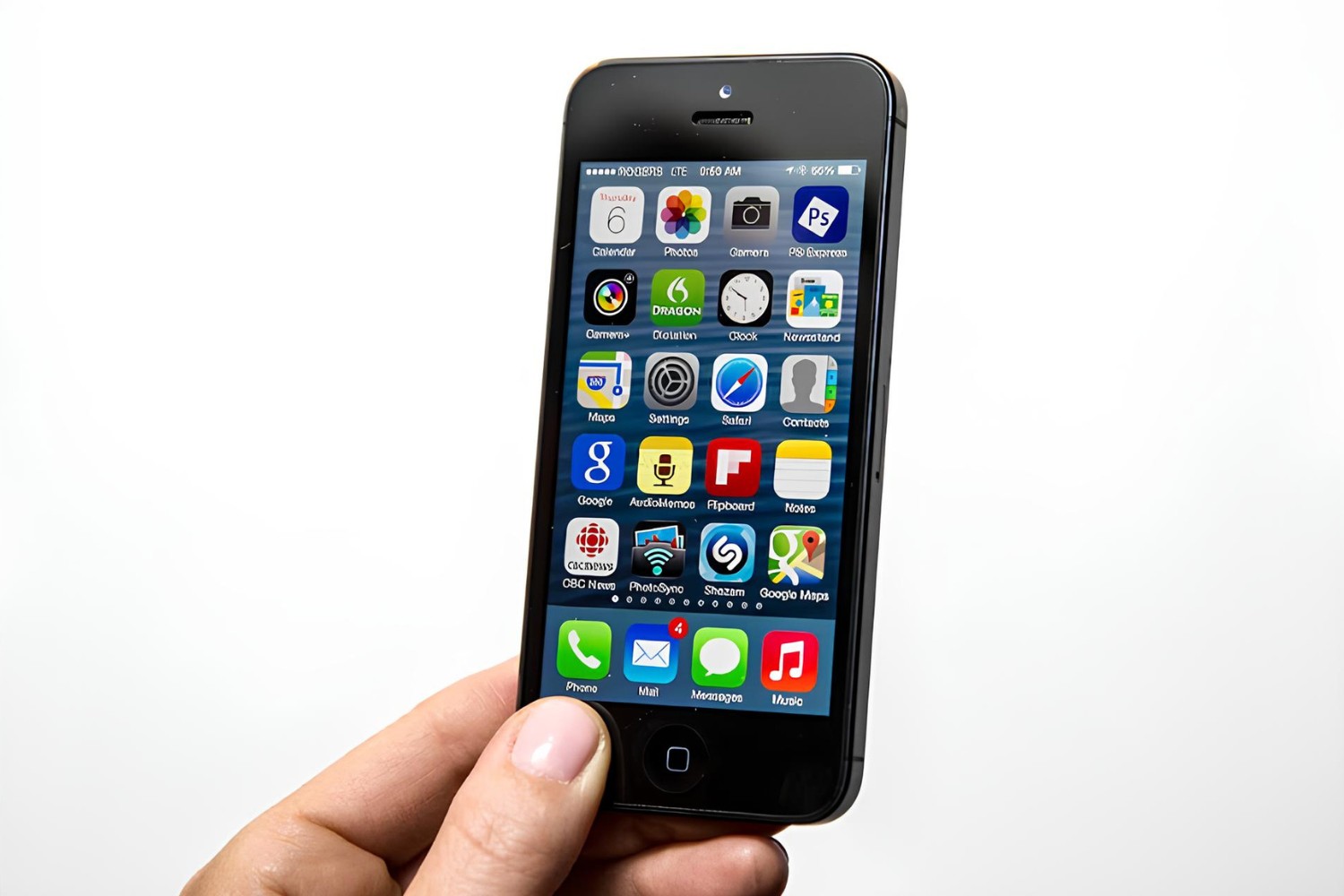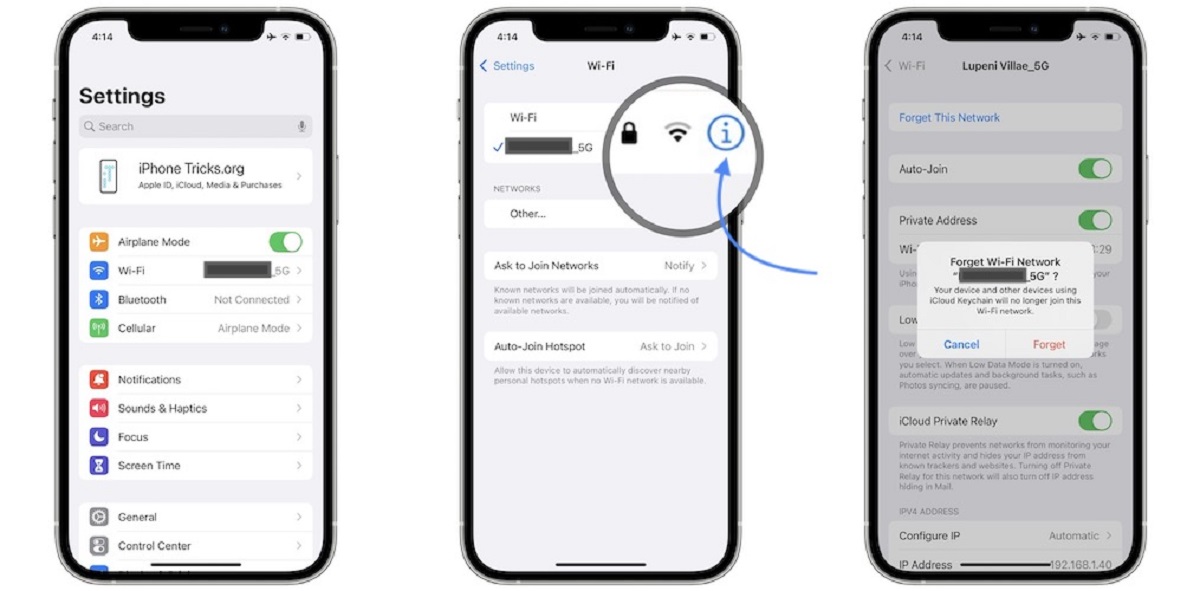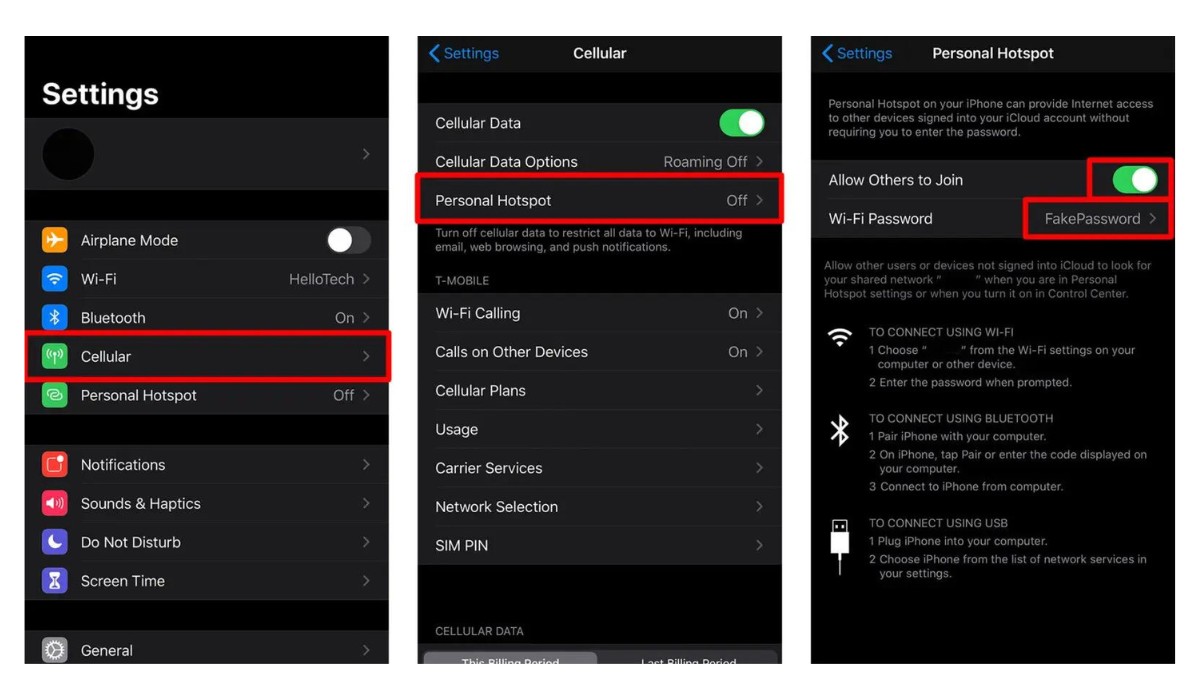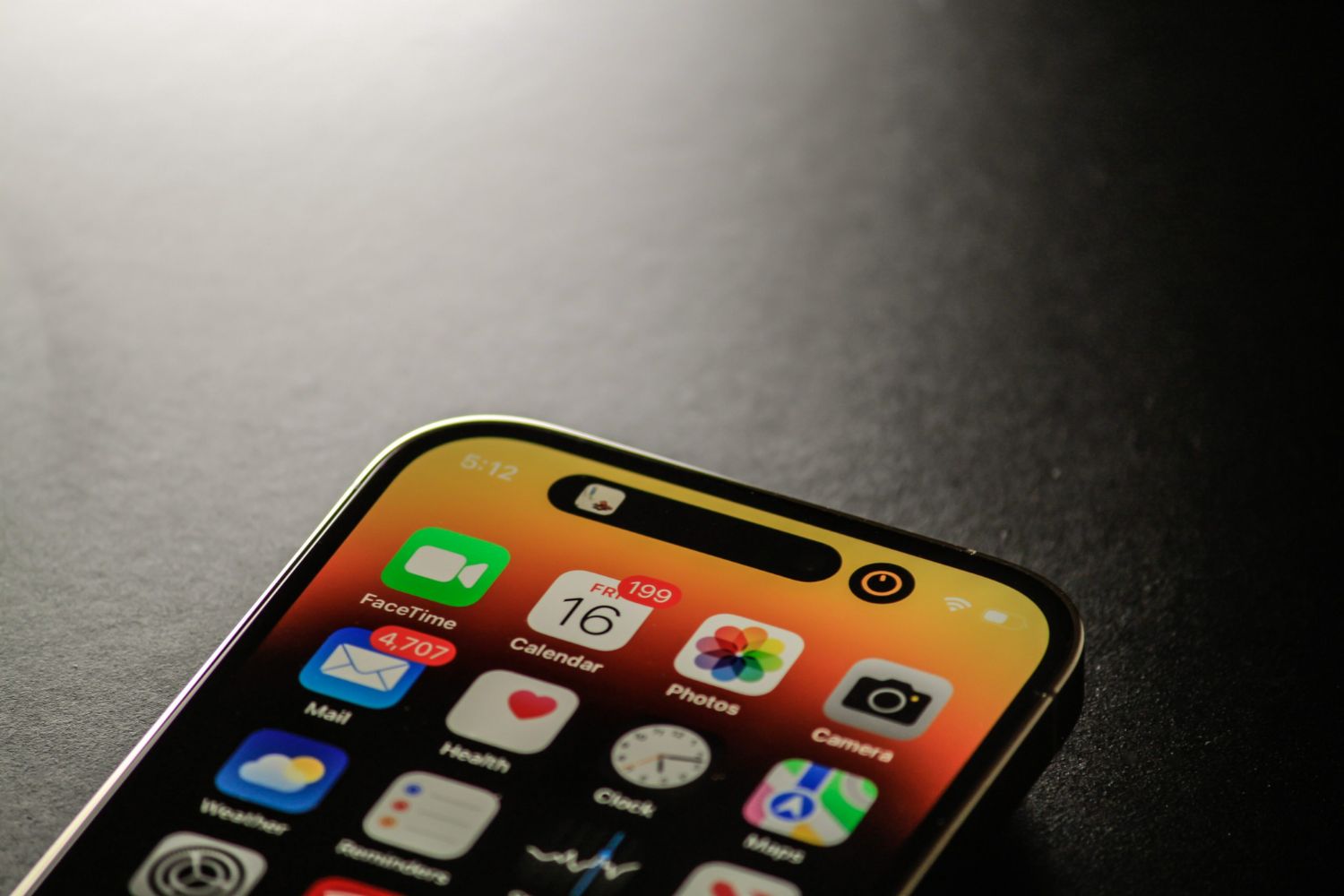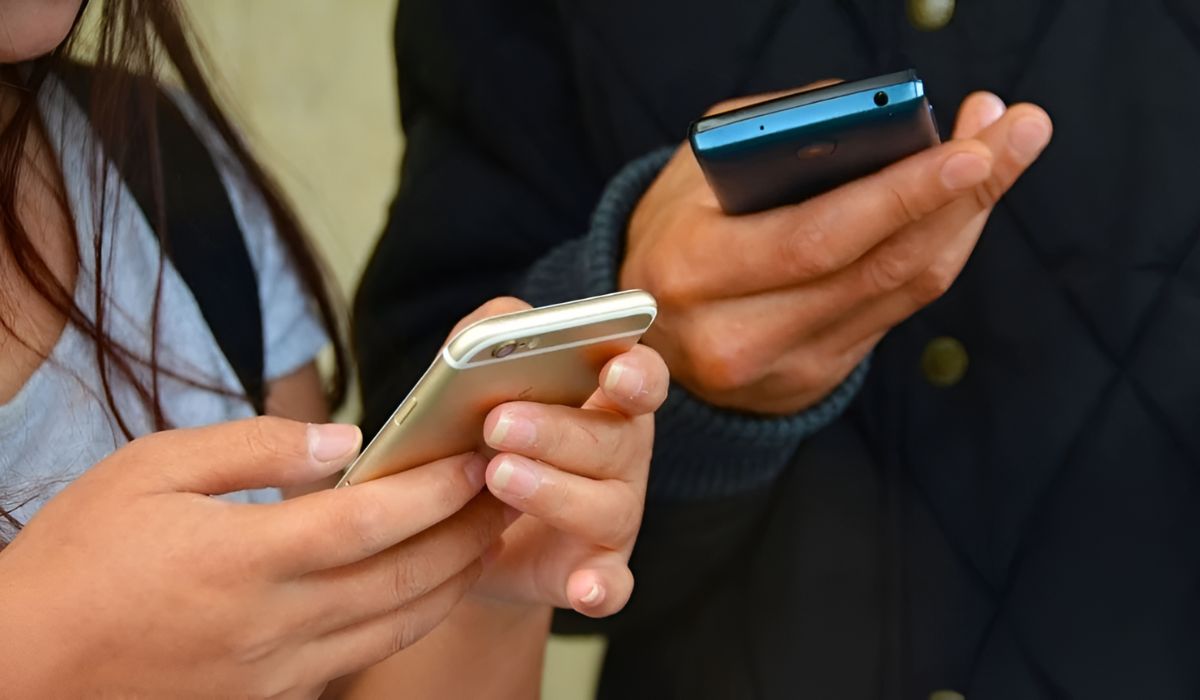Introduction
Experiencing sudden disconnection issues with your iPhone's hotspot can be frustrating, especially when you rely on it for seamless internet connectivity. Whether you're using your iPhone as a mobile hotspot for work, leisure, or staying connected while on the go, encountering disruptions in the hotspot connection can disrupt your workflow and cause inconvenience.
In this comprehensive guide, we will explore troubleshooting tips to help you address and resolve iPhone hotspot disconnection issues effectively. By following these steps, you can potentially overcome the challenges associated with intermittent hotspot disconnections and enjoy a stable and reliable internet connection on your devices.
Stay tuned as we delve into various troubleshooting methods, including checking your network connection, updating your iPhone's software, resetting network settings, disabling low power mode, forgetting and reconnecting to the hotspot, and reaching out to your carrier for additional support. These troubleshooting tips are designed to empower you with the knowledge and steps needed to address iPhone hotspot disconnection issues, allowing you to regain control over your internet connectivity and enjoy uninterrupted access to the online world.
Let's embark on this journey to troubleshoot iPhone hotspot disconnection issues and pave the way for a smoother and more consistent internet experience. Whether you're a remote worker, a student, or a digital nomad, having a reliable iPhone hotspot connection is essential for staying productive, connected, and informed. So, let's roll up our sleeves and explore the troubleshooting strategies that can help you overcome the challenges of intermittent hotspot disconnections.
Check Your Network Connection
When encountering iPhone hotspot disconnection issues, the first step is to assess the status of your network connection. This involves verifying the strength and stability of the cellular or Wi-Fi connection that your iPhone is utilizing to provide the hotspot. Here are the essential steps to perform while checking your network connection:
-
Signal Strength: Begin by checking the signal strength indicator on your iPhone. If using cellular data, ensure that the signal bars are strong and stable. In the case of Wi-Fi, confirm that your iPhone is connected to a reliable and robust Wi-Fi network with a strong signal.
-
Data Speed: Assess the data speed of your network connection. You can use speed test applications available on the App Store to measure the upload and download speeds. If the speeds are significantly lower than expected, it may indicate a network issue that could contribute to hotspot disconnections.
-
Network Congestion: Consider the possibility of network congestion, especially when using cellular data. During peak hours or in densely populated areas, network congestion can lead to intermittent disconnections. Observing the consistency of your hotspot connection during different times of the day can provide insights into potential network congestion issues.
-
Router/Modem Inspection: If using a Wi-Fi connection as the source for your iPhone's hotspot, inspect the router or modem for any issues. Ensure that the router is functioning properly, and there are no connectivity issues on the network's end.
By thoroughly examining these aspects of your network connection, you can gain valuable insights into the potential factors contributing to iPhone hotspot disconnection issues. This proactive approach allows you to identify and address network-related issues that could be impacting the stability of your hotspot connection.
Remember, a strong and reliable network connection is the foundation for a stable iPhone hotspot. Addressing any underlying network issues can significantly improve the overall performance and consistency of your hotspot connection, minimizing the occurrence of disconnections and enhancing your internet connectivity experience.
Update Your iPhone's Software
Ensuring that your iPhone's software is up to date is a crucial step in troubleshooting hotspot disconnection issues. Apple regularly releases software updates that include bug fixes, performance enhancements, and improvements to network connectivity. By keeping your iPhone's software current, you can address potential software-related issues that may be contributing to hotspot disconnections.
To update your iPhone's software, follow these steps:
-
Check for Updates: Go to the "Settings" app on your iPhone and navigate to "General" > "Software Update." Here, your device will search for the latest available software update. If an update is available, follow the on-screen instructions to download and install it. It's essential to have a stable internet connection, preferably Wi-Fi, to ensure a successful update process.
-
Automatic Updates: You can enable automatic software updates on your iPhone to ensure that your device stays up to date without manual intervention. To do this, go to "Settings" > "General" > "Software Update" and enable the "Automatic Updates" option. With this feature activated, your iPhone will download and install updates during the night when it's connected to power and Wi-Fi.
-
Benefits of Updating: Software updates often include fixes for known network-related issues, including improvements to the stability of Wi-Fi and cellular connectivity. By staying current with software updates, you can leverage these enhancements to potentially resolve hotspot disconnection issues.
-
Restart After Update: Once the software update is complete, it's advisable to restart your iPhone to ensure that all changes take effect. A simple restart can help in finalizing the update process and refreshing the device's system components.
Updating your iPhone's software is a proactive and effective way to address potential software-related factors that could be contributing to hotspot disconnection issues. By embracing the latest software updates from Apple, you equip your iPhone with the necessary optimizations and improvements to maintain a stable and reliable hotspot connection.
Remember, staying vigilant about software updates not only enhances the performance of your device but also plays a pivotal role in troubleshooting and resolving connectivity issues, ensuring a seamless and uninterrupted hotspot experience.
Reset Network Settings
Resetting your iPhone's network settings can serve as a powerful troubleshooting step to address complex connectivity issues, including persistent hotspot disconnections. This process effectively clears all network-related configurations and preferences on your device, allowing you to start afresh with a clean slate for network connectivity. Here's a detailed exploration of the steps involved in resetting your iPhone's network settings:
Step-by-Step Guide:
-
Access the Settings: Begin by accessing the "Settings" app on your iPhone. This can be done by locating and tapping the gear-shaped icon on your home screen.
-
Navigate to General: Within the Settings menu, scroll and tap on "General." This section houses a range of device management options, including those related to network settings.
-
Find Reset Options: Once in the General settings, locate and tap on "Reset." This will open a set of options for resetting various aspects of your iPhone.
-
Select Reset Network Settings: Within the Reset menu, look for the option labeled "Reset Network Settings." When selected, a prompt will appear, asking you to confirm your decision to reset network settings.
-
Confirm the Reset: Upon confirming the action, your iPhone will proceed to reset all network settings. This includes Wi-Fi, cellular, Bluetooth, and VPN configurations, as well as any saved network passwords.
-
Restart Your iPhone: After the reset process is complete, it is recommended to restart your iPhone. This allows the device to initialize the newly reset network settings and establish fresh connections.
Benefits and Considerations:
-
Clears Configuration Issues: Resetting network settings can effectively address underlying configuration issues that may be contributing to hotspot disconnections. By starting with a clean network slate, you eliminate potential conflicts and inconsistencies in network configurations.
-
Reestablishes Connections: After the reset, your iPhone will prompt you to reconfigure and reconnect to Wi-Fi networks, cellular data, and other network-related services. This presents an opportunity to establish fresh connections that can potentially resolve hotspot disconnection issues.
-
Loss of Saved Data: It's important to note that resetting network settings will result in the loss of saved Wi-Fi passwords, Bluetooth pairings, and VPN configurations. You will need to re-enter this information when reconnecting to networks and devices.
-
Potential Impact on Other Settings: While the reset specifically targets network configurations, it's advisable to review other settings on your iPhone after the process is complete. This ensures that any unintended changes are promptly identified and addressed.
By resetting your iPhone's network settings, you embark on a proactive troubleshooting journey that can effectively address complex connectivity challenges, including intermittent hotspot disconnections. This method empowers you to realign your device's network configurations, paving the way for a more stable and reliable hotspot experience.
Remember, after completing the network settings reset, take the time to reconnect to your preferred networks and assess the performance of your iPhone's hotspot. This hands-on approach allows you to gauge the impact of the reset and determine if it has successfully mitigated the hotspot disconnection issues.
Incorporating the network settings reset into your troubleshooting arsenal equips you with a potent tool to combat connectivity hurdles, ultimately enhancing the overall resilience and performance of your iPhone's hotspot functionality.
Disable Low Power Mode
When encountering iPhone hotspot disconnection issues, one often overlooked yet impactful aspect to consider is the activation of Low Power Mode on your device. While Low Power Mode is a valuable feature designed to conserve battery life during critical power situations, its activation can potentially impact the performance of network connectivity, leading to intermittent hotspot disconnections.
Here's a closer look at the steps to disable Low Power Mode and the underlying rationale behind this troubleshooting approach:
Understanding Low Power Mode
Low Power Mode is a built-in feature on iPhones that reduces overall power consumption by limiting background app refresh, automatic downloads, visual effects, and some system tasks. When your iPhone's battery falls below 20% or 10% (or when manually activated), Low Power Mode automatically kicks in to extend battery life, ensuring that your device remains functional during low-power scenarios.
Disabling Low Power Mode
To disable Low Power Mode on your iPhone and potentially alleviate hotspot disconnection issues, follow these straightforward steps:
-
Access Settings: Begin by accessing the "Settings" app on your iPhone. This can be done by locating and tapping the gear-shaped icon on your home screen.
-
Navigate to Battery: Within the Settings menu, scroll and tap on "Battery." This section houses various battery-related settings and indicators, including the option to manage Low Power Mode.
-
Disable Low Power Mode: Upon entering the Battery settings, you will find the toggle switch for Low Power Mode. If the toggle is green, indicating that Low Power Mode is active, simply tap the switch to turn it off.
Rationale for Disabling Low Power Mode
Disabling Low Power Mode can have a positive impact on network connectivity, including the stability of your iPhone's hotspot. Here's why this action is relevant in troubleshooting hotspot disconnection issues:
-
Network Performance: Low Power Mode restricts certain background processes and activities to conserve power, potentially affecting the performance of network-related tasks. By disabling Low Power Mode, your iPhone can operate at full capacity, which may contribute to a more stable and consistent hotspot connection.
-
Background Refresh: Low Power Mode limits background app refresh, which can impact the ability of apps, including the hotspot functionality, to maintain continuous network connectivity. Disabling Low Power Mode allows for regular background processes to resume, potentially addressing intermittent hotspot disconnections.
-
Optimizing Network Resources: With Low Power Mode disabled, your iPhone can allocate resources more effectively to maintain network connections, including the hotspot feature. This optimization can mitigate potential disruptions and enhance the overall reliability of your hotspot connection.
By proactively disabling Low Power Mode, you provide your iPhone with the opportunity to operate at its full networking potential, potentially resolving hotspot disconnection issues and ensuring a more consistent and reliable internet sharing experience.
Incorporating the disabling of Low Power Mode into your troubleshooting strategy empowers you to explore the impact of power-saving features on network connectivity, ultimately contributing to a more robust and dependable hotspot functionality on your iPhone.
Remember, after disabling Low Power Mode, monitor the performance of your iPhone's hotspot to gauge the impact of this adjustment. This hands-on approach allows you to assess whether the deactivation of Low Power Mode has positively influenced the stability of your hotspot connection.
By taking a proactive stance in managing Low Power Mode, you can potentially address network-related challenges and optimize the performance of your iPhone's hotspot, ensuring a seamless and uninterrupted internet sharing experience.
Forget and Reconnect to the Hotspot
When troubleshooting iPhone hotspot disconnection issues, one effective strategy involves the deliberate act of forgetting the hotspot network on the connected devices and subsequently reconnecting to it. This process serves as a targeted approach to address potential inconsistencies in the network configuration and establish a fresh connection, potentially mitigating the occurrence of intermittent hotspot disconnections.
Step-by-Step Guide:
-
Access Wi-Fi Settings: Begin by accessing the Wi-Fi settings on the devices connected to your iPhone's hotspot. This can typically be done through the device's settings menu or control center.
-
Forget the Hotspot Network: Within the Wi-Fi settings, locate the network corresponding to your iPhone's hotspot and select the option to "Forget" or "Forget This Network." This action removes the network's configuration from the device, essentially resetting its connection to the hotspot.
-
Reconnect to the Hotspot: After forgetting the hotspot network, proceed to reconnect to it by selecting the network from the available Wi-Fi options and entering the hotspot password if required. This establishes a fresh connection between the device and the iPhone's hotspot.
Rationale for Forgetting and Reconnecting:
-
Clearing Configuration Issues: By forgetting and reconnecting to the hotspot, you effectively clear any potential configuration inconsistencies or conflicts that may have contributed to the hotspot disconnection issues.
-
Establishing a Fresh Connection: This process allows the connected devices to initiate a new connection to the hotspot, potentially bypassing any underlying issues that may have affected the stability of the previous connection.
-
Realigning Network Settings: Forgetting and reconnecting to the hotspot prompts the devices to realign their network settings with the iPhone's hotspot, potentially resolving any communication irregularities that led to disconnections.
Benefits and Considerations:
-
Targeted Network Refresh: This approach provides a targeted refresh of the network connection, potentially addressing specific issues related to the previous configuration.
-
Optimized Network Handshake: By initiating a fresh connection, the devices and the iPhone's hotspot engage in a new network handshake, potentially leading to improved stability and reliability.
-
Device-Specific Impact: It's important to note that forgetting and reconnecting to the hotspot must be performed on each connected device individually, ensuring that each device establishes a fresh connection.
By incorporating the deliberate act of forgetting and reconnecting to the hotspot into your troubleshooting repertoire, you empower yourself to address potential network configuration irregularities and establish a more robust and dependable connection between your iPhone's hotspot and the connected devices. This method offers a targeted and proactive approach to resolving hotspot disconnection issues, ultimately contributing to a more consistent and reliable internet sharing experience.
Contact Your Carrier
If persistent iPhone hotspot disconnection issues persist despite implementing the aforementioned troubleshooting measures, reaching out to your carrier can provide valuable insights and potential solutions. Your carrier, whether it's AT&T, Verizon, T-Mobile, or another provider, plays a pivotal role in facilitating the network connectivity that powers your iPhone's hotspot functionality. Here's how you can effectively engage with your carrier to address hotspot disconnection challenges:
-
Customer Support Channels: Initiate contact with your carrier's customer support team through their designated channels, such as phone support, online chat, or in-person visits to carrier stores. These avenues provide direct access to carrier representatives who can offer personalized assistance tailored to your specific hotspot disconnection issues.
-
Issue Description: When communicating with your carrier, provide a detailed description of the hotspot disconnection problems you're experiencing. Include relevant information such as the frequency of disconnections, the affected locations, and any specific error messages or indicators observed on your iPhone.
-
Diagnostic Assistance: Your carrier's support team may guide you through diagnostic steps to assess the network connectivity, signal strength, and potential network congestion in your area. By collaborating with carrier representatives, you can gain insights into the underlying network dynamics that may be contributing to the hotspot disconnections.
-
Network Troubleshooting: Carrier support personnel are equipped to perform network troubleshooting on their end, identifying any network-related issues that could impact your iPhone's hotspot performance. This may involve assessing network coverage, tower connectivity, and network infrastructure to pinpoint potential sources of disruption.
-
Service Plan Evaluation: Engage in a discussion about your current service plan with the carrier. They can review your plan's features, data allocation, and network prioritization, ensuring that your service plan aligns with your usage patterns and the demands of utilizing your iPhone's hotspot.
-
Technical Support: If the hotspot disconnection issues persist, request technical support from your carrier. This may involve advanced troubleshooting steps, network configuration adjustments, or potential device-specific optimizations to enhance the stability of your iPhone's hotspot connection.
-
Network Updates: Inquire about any network updates, maintenance activities, or infrastructure enhancements planned in your area. Carrier representatives can provide valuable information regarding network improvements that may address the underlying causes of hotspot disconnections.
By engaging with your carrier and leveraging their expertise and resources, you can collaboratively address iPhone hotspot disconnection issues, potentially uncovering solutions and optimizations that enhance the stability and reliability of your hotspot connection. The insights and support provided by your carrier can play a pivotal role in resolving complex network challenges, ensuring a seamless and consistent hotspot experience for your iPhone and connected devices.
Conclusion
In conclusion, troubleshooting iPhone hotspot disconnection issues requires a proactive and systematic approach to address potential network-related challenges and optimize the performance of the hotspot functionality. By navigating through the troubleshooting tips outlined in this guide, you've gained valuable insights into the various strategies and methods that can empower you to overcome intermittent hotspot disconnections and foster a more stable and reliable internet sharing experience.
From assessing the network connection and updating your iPhone's software to resetting network settings, disabling Low Power Mode, and engaging with your carrier for support, each troubleshooting step serves as a valuable tool in your arsenal to combat hotspot disconnection issues. The deliberate act of forgetting and reconnecting to the hotspot also offers a targeted approach to realign network configurations and establish fresh connections, potentially mitigating the occurrence of disruptions.
It's important to recognize that troubleshooting hotspot disconnection issues often involves a blend of technical knowledge, proactive engagement with device settings, and potential collaboration with carrier support personnel. By integrating these elements, you position yourself to navigate and address the complexities of network connectivity, ultimately enhancing the resilience and performance of your iPhone's hotspot.
As you embark on your troubleshooting journey, remember that each step is an opportunity to gain deeper insights into the dynamics of network connectivity, device interactions, and potential external factors that may influence hotspot stability. Embracing a proactive and inquisitive mindset allows you to not only address immediate challenges but also build a foundation of knowledge and expertise in managing network-related issues.
Furthermore, the troubleshooting journey serves as a testament to your commitment to optimizing the performance of your iPhone's hotspot, ensuring that it remains a dependable tool for staying connected, productive, and informed. By leveraging the insights and strategies presented in this guide, you're equipped to navigate the complexities of network troubleshooting with confidence and resilience.
In the dynamic landscape of mobile connectivity, the ability to troubleshoot and optimize hotspot performance is a valuable skill that empowers you to maintain a seamless and uninterrupted internet sharing experience. By integrating these troubleshooting tips into your repertoire, you establish a proactive approach to addressing hotspot disconnection issues, ultimately enhancing the overall connectivity experience on your iPhone.
As you continue to explore the intricacies of network troubleshooting, remember that each challenge presents an opportunity for growth and mastery. By embracing this journey with curiosity and determination, you position yourself to not only overcome hotspot disconnection issues but also deepen your understanding of network dynamics, device interactions, and the evolving landscape of mobile connectivity.
In the pursuit of a more resilient and dependable iPhone hotspot experience, your proactive engagement with troubleshooting strategies serves as a testament to your dedication to optimizing network performance and embracing the transformative potential of seamless connectivity.







